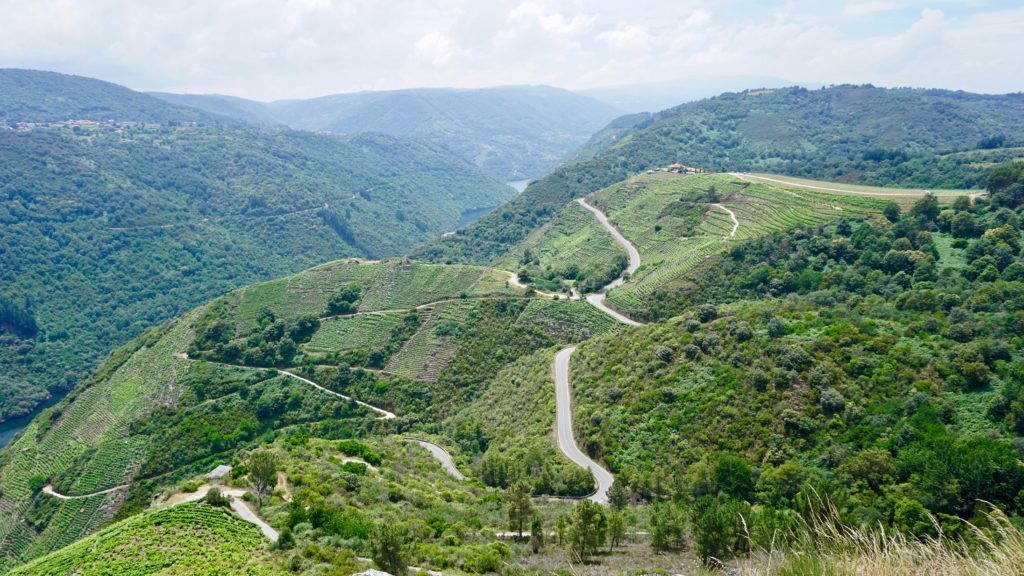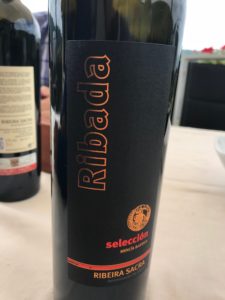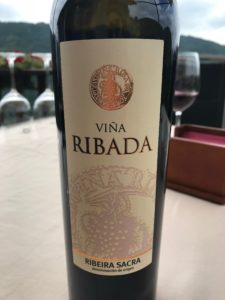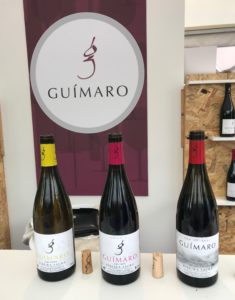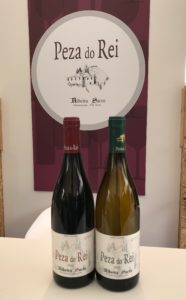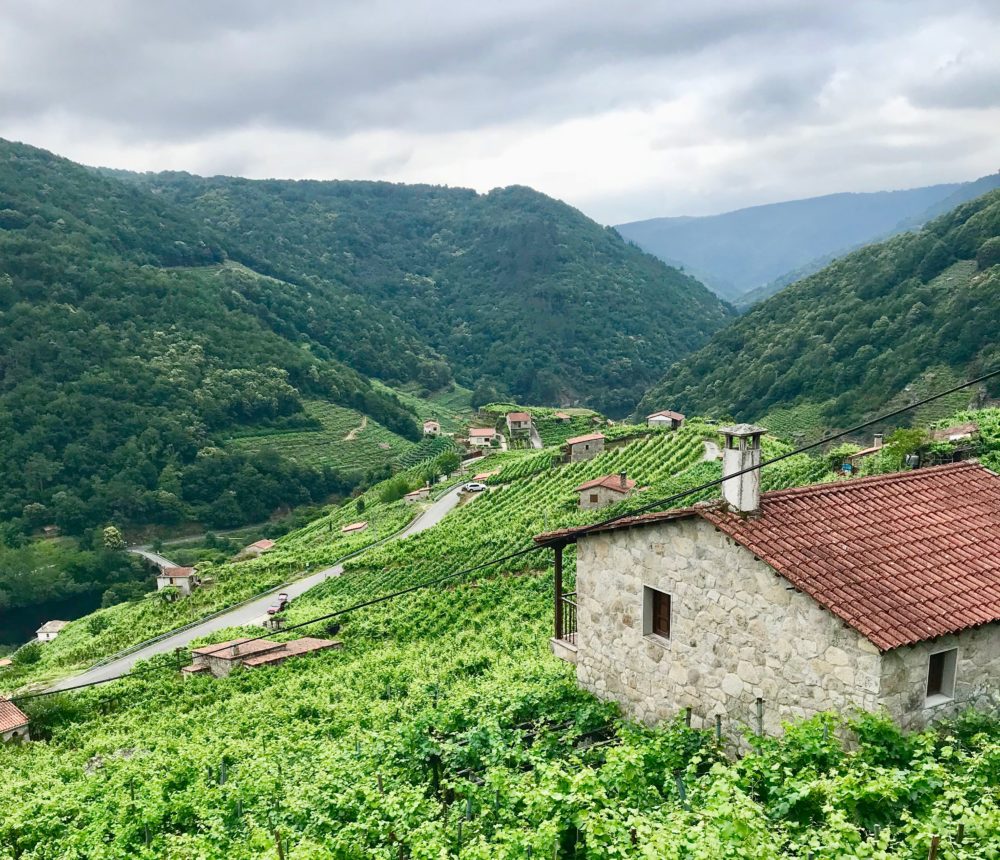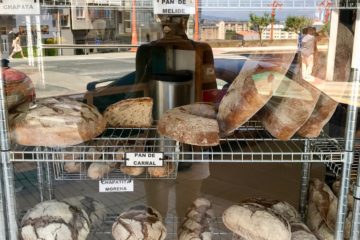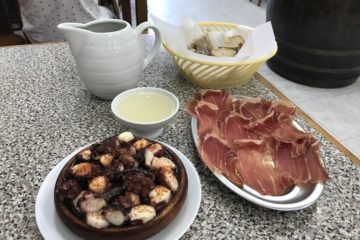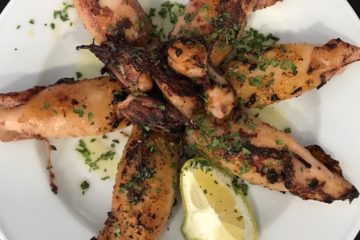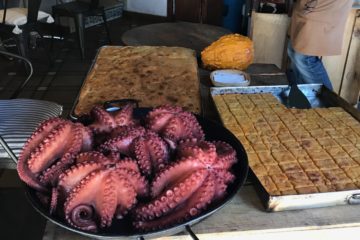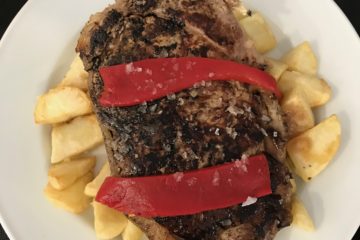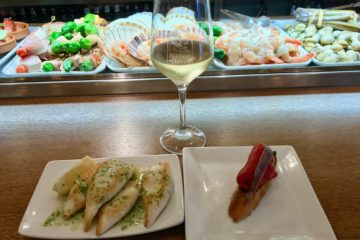Ribeira Sacra
With terraces created by the Roman’s over 2,000 years ago, Ribeira Sacra cradled some of the Empire’s most ancient vines. After phylloxera, the region was partially revitalized but still has a long way to go. The manual work required and wet climate can be very unforgiving. On the banks of the Miño River, Chantada is known as the heart of the region and is a great place to base your exploration.
Bodega Ribada is an excellent family producer growing and making organic wines from beautiful mountain vines high above the Miño. I had the pleasure of meeting and tasting with the owner, Manuel Calvo Mendez, who in 2005 bought and rehabilitated the forgotten vines, transforming the property into a healthy and thriving ecosystem. Primarily focusing on different expressions of 100% Mencía, Bodega Ribada also produces a juicy, medium bodied Godello white.
I was also able to try a variety of top Ribeira Sacra wines at a local wine festival. Peza do Rei and Guímaro (meaning rebel) were by far my favorites. They both respect traditional low/no intervention winemaking techniques and make exceptional young and age-worthy bottles of Godello and Mencía. Families and courageous winemakers such as Guímaro’s Pedro Manuel Rodríguez, are the impetus behind replanting indigenous varietals and revitalizing abandoned lands. In addition to owning 8 hectares, Rodriguez is sourcing grapes from properties he’s now encouraged and successfully convinced to stop the use of pesticides. Another great producer to seek out is Bodega Diego de Lemos, who in 2002 was the first certified organic producer in Galicia. Thanks to these proud stewards of the land, the future of this heroic wine region is looking very bright.
While the region is home to many incredible handcrafted wines, I also visited larger producers who are making considerably lower quality Mencía. Most were over-oaked, muted/dead and highly alcoholic. While not always the case, this contrast stood as a reminder that the meticulous care and attention that traditional, smaller, family producers put into their winemaking, nearly always translates to the final product. To that point, the neighboring eastern region of Bierzo is also producing high quality Mencía, and is worth a visit.
Rías Baixas
This coastal area grows some of the best Albariño in the world, along with much smaller quantities of Caiño Tinto. Its proximity to the Atlantic combined with alluvial top soils and granite below makes it perfect for cultivating this acidic, salty varietal which pairs perfectly with the area’s abundant seafood. I lost track of how many times I had Galician octopus with a crisp glass of Albariño. At its best, Albariño is aromatic with hints of lemon, lime and stone fruit. Some can lean more in the direction of apple or pear. It’s long on the finish with layers of flavor.
A 15 minute drive from Cambados, or 30 minutes from Pontevedra, puts you in the Salnés Valley where you can visit numerous producers with varying styles. I enjoyed many glasses from producers including Añada de Baladiña, Leirana and Lagar de Pintos. Making wines from both Rias Baixas and Ribeira Sacra is also Bodegas Nanclares. Their lineup of terroir-driven, old vine wines are definitely worth seeking out!
